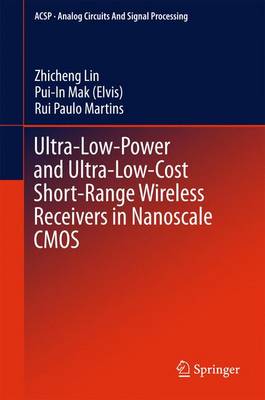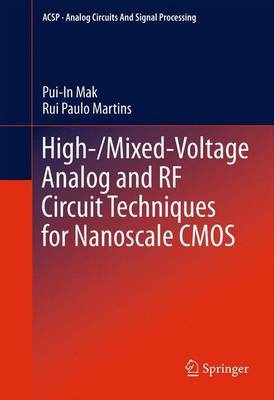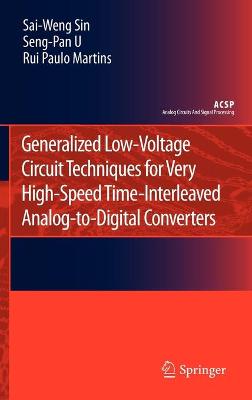Analog Circuits and Signal Processing
4 total works
Ultra-Low-Power and Ultra-Low-Cost Short-Range Wireless Receivers in Nanoscale CMOS
by Zhicheng Lin, Pui-In Mak (Elvis), and Rui Paulo Martins
Analog-Baseband Architectures and Circuits for Multistandard and Low-Voltage Wireless Transceivers
by Pui-In Mak, Ben U Seng Pan, and Rui Paulo Martins
This book presents architectural and circuit techniques for wireless transceivers to achieve multistandard and low-voltage compliance. It provides an up-to-date survey and detailed study of the state-of-the-art transceivers for modern single- and multi-purpose wireless communication systems. The book includes comprehensive analysis and design of multimode reconfigurable receivers and transmitters for an efficient multistandard compliance.
High-/Mixed-Voltage Analog and RF Circuit Techniques for Nanoscale CMOS
by Pui-In Mak and Rui Paulo Martins
This book presents high-/mixed-voltage analog and radio frequency (RF) circuit techniques for developing low-cost multistandard wireless receivers in nm-length CMOS processes. Key benefits of high-/mixed-voltage RF and analog CMOS circuits are explained, state-of-the-art examples are studied, and circuit solutions before and after voltage-conscious design are compared. Three real design examples are included, which demonstrate the feasibility of high-/mixed-voltage circuit techniques.
- Provides a valuable summary and real case studies of the state-of-the-art in high-/mixed-voltage circuits and systems;
- Includes novel high-/mixed-voltage analog and RF circuit techniques - from concept to practice;
- Describes the first high-voltage-enabled mobile-TVRF front-end in 90nm CMOS and the first mixed-voltage full-band mobile-TV Receiver in 65nm CMOS;
- Demonstrates the feasibility of high-/mixed-voltage circuit techniques with real design examples.



